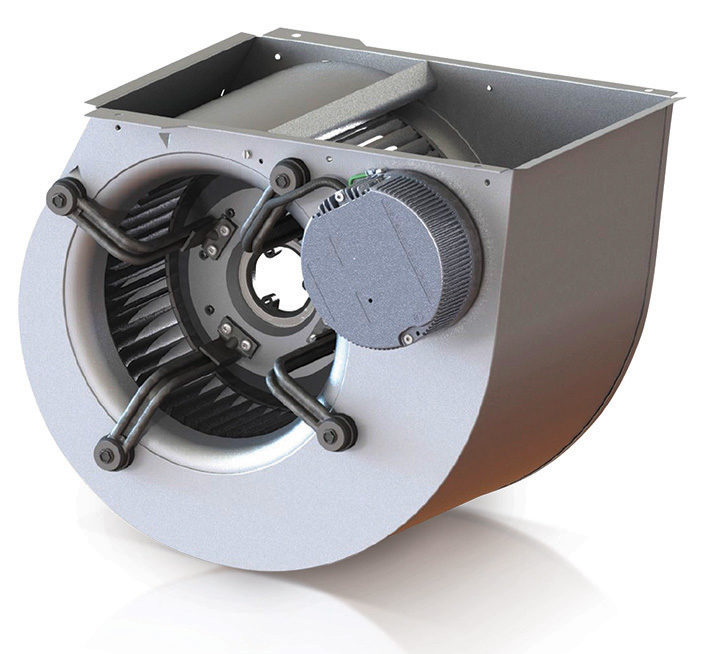
Replacements for all classrooms
For the five schools, 132 units were specified, and two under-the-window units were chosen for the high school football locker room. The classroom units have super-efficient ECM and microchannel coils. Advanced blower and compressor technologies contribute to the decreased sound and power output.
They also have a proprietary counter-flow (CF) coil, offering substantial improvements over existing parallel-flow (PF) technology prevalent in the HVAC market today. The all-aluminum coils provide condensing and evaporation. Inside the CF coil, refrigerant makes two passes—once up and then back down—to create a uniformly conditioned air stream.
The vertical systems allow for ductwork and diffusers to be connected easily so sound from the fan and the moving air is distributed throughout the room, which more or less eliminates the sound altogether.
“These types of units have been our preferred solution since they came on the market. Being able to provide ducted supply systems to the classrooms allows for better temperature control throughout an entire room,” said Morgenstern.
The two-stage cooling keeps the units operating in the most efficient range possible at all times.
Timing is everything
There is a very small window of opportunity to get these types of school jobs done, since the work—demolition, installation, and startup of all units—must be completed during the summer months so they are ready to go for the following school year. White and Morgenstern worked closely with the manufacturer and the manufacturer’s rep, ensuring everything came together seamlessly.
This is the first school year since all the new unit ventilators have been installed. White says the teachers have nothing but praise for the lack of noise and the delivery of consistent temperatures—as well as conditioned fresh air—in the classrooms.
“The renovations have had a dramatic ‘ladder’ effect. The students are happy, not distracted, and learning… which in turn makes the teachers happy, making it easier for them to inspire the student body, which in turn makes the school board happy,” said White.
Conclusion
With more than one-sixth of the entire U.S. population inside K–12 public school buildings each weekday, school facilities have a major impact on the health and performance of students and staff. HVAC upgrades reduce energy consumption and costs—both in educational facility projects and in other commercial segments—and enhance schools’ ability to deliver high-quality education.
Paul Selking is an HVAC business leader with Fort Wayne, Indiana-based Genteq, a Regal brand. A graduate of Purdue University and certified 6 Sigma Black Belt, he has worked for 25 years in the HVAC industry—this experience has offered him an opportunity to speak at the Air-conditioning, Heating, and Refrigeration Institute (AHRI), Air-conditioning Contractors of America (ACCA), Heating, Air-conditioning, and Refrigeration Distributors International (HARDI), and Refrigeration Service Engineers Society (RSES) events. Selking has recently been recognized for his fifth HVAC patent. He may be reached at paul.selking@regalbeloit.com.




